- Home
- Peter Lovesey
Waxwork sc-8
Waxwork sc-8 Read online
Waxwork
( Sergeant Cribb - 8 )
Peter Lovesey
Peter Lovesey
Waxwork
SUNDAY, 15th APRIL
There was nothing shifty about James Berry’s eyes. No sideward glance or drooping lids. They were wide and steady. The Telegraph had called them codfish eyes once. After that he had changed to the Graphic.
The eyes were scanning it now, line by line, column by column. The reports on criminal matters, headed Police Intelligence, interested him most. Over the mantelpiece in the front room of his house in Bilton Place, Bradford, were two gilt frames, each filled with eight small photographs of men and women, mounted on best Bristol board. Each was a convicted murderer.
They were a select bunch. They all came in the carte-de-visite size, which showed they were not riffraff. Two were doctors.
This Sunday evening in 1888 his wife was talking about them. ‘I believe I could stand that lot hanging over my front room mantelpiece if there was summat else up there beside them.’
He looked over his paper. ‘What did you have in mind?’
‘A picture of you, love.’
It had never occurred to him to put himself up there.
Now that he considered it, he would not look bad in sepia. At thirty-six, he still had most of his hair. His face was manly, right enough, broad and powerful, with a good growth of black beard. There was a deep scar down the right cheek, but the beard covered most of it. He had a notion that his wife liked the scar. She had never inquired how he came by it, but there were times when she traced it with her fingertips. Ever so lightly.
He told her she was talking rubbish and went back to the Graphic. There was a case of poisoning in Kew.
She said the rogues’ gallery made her flesh creep. She wanted to look up from her sewing once in a while and see an honest, God-fearing face.
He knew why she mentioned the Almighty. They both took a pride in the lay-preaching. Folk sat up in chapel when James Berry went to the pulpit. He could speak with authority on the wages of sin.
‘There’s that elegant studio in Bridge Street,’ she went on. ‘You know-with velvet at the window? I’ve seen what he can do. Beautiful likenesses. You can wear your chapel suit and butterfly collar. You’ll make a grand picture, Jim!’
He told her straight that he did not hold with photography. She said it was no sin as far as she was aware. There was nothing about it in the Good Book that she could recollect.
He did not hold with sarcasm either. If it had not been the Sabbath he would have cuffed her for that. He told her so. She went out to make the cocoa.
The Graphic had a lot to say about the Kew murder. It seemed they had arrested a young married woman. Her people were well-to-do. They would see she was well represented at the trial. Someone of the calibre of Clarke or Russell was expected to lead the defence. A classic trial was in prospect.
When she appeared with his mug and a biscuit he told her why he had no intention of going to the studio in Bridge Street. ‘In my sort of work you don’t go out of your way to be recognised. You get enough of that, without photographs. If I had my picture took in Bradford, inside the hour it would be in t’ shop window with James Berry, Public Hangman in large letters under it.’
She was unimpressed. ‘We’ve no cause to be ashamed, Jim. If folk round here want to see your likeness, why not let them?’
He told her Bradford folk did not matter. They knew him mostly, any road. The trouble would start when some newspaper reporter came by. He would be into that shop like a ferret. Next thing, the picture would be plastered over every paper in the kingdom. It might easily cost them the job.
That silenced her.
No more was said on the matter that evening. Yet Berry did not dismiss it from his mind.
WEDNESDAY, 6th JUNE
The trial of Miriam Cromer took place at the height of the London season of 1888. It was fixed for the week before Ascot, at the Central Criminal Court.
The preliminary hearings at the inquest and police court had set out the facts like visiting cards. The deceased, Josiah Perceval, had been employed as assistant to Mr Howard Cromer, the owner of a photographic studio in Kew. It was a fashionable place, patronised by society. The name of Cromer was familiar to readers of The Tatler. On the afternoon of Monday, 12th March, a Dr Matthew Eagle had visited the studio, not to have his photograph taken, but to confirm that Josiah Perceval was a dead man.
The cause of death was poisoning. The post mortem on 14th March confirmed the presence of potassium cyanide, one of the fastest-acting poisons known to science. The dregs of a glass of madeira beside Perceval’s corpse had been analysed and found to contain the poison. A bottle of Scheele’s solution of potassium cyanide was kept in the processing room at the studio for use as a fixing agent. It was found in the poison cabinet half empty.
The first theory of the police was suicide. Perceval had been found alone. No one else had been in the studio rooms for two hours. He was understood to have had financial worries. He owed his bookmaker sixty-seven pounds.
The suicide theory was discarded when a decanter of madeira found in a chiffonier in the studio was analysed and found to contain cyanide. A man proposing to poison himself would put the poison in the glass he drank from, not the decanter. The person in the house responsible for keeping the decanters topped up was the proprietor’s wife, Mrs Miriam Cromer. She had attended to it at noon on the day of Perceval’s death. Before two o’clock she had gone out to her dressmaker’s for a fitting. Her husband was in Brighton for a meeting of the Portrait Photographers’ League, so Perceval was alone in the studio. It was an open secret that he helped himself to madeira when he had the opportunity.
At twenty minutes past three the housekeeper and a maidservant who were in the basement underneath the studio heard a heavy thump as if someone had fallen. It was followed by other sounds, a series of knocks as if someone were beating upon the floor. There was an order that no servant was to be seen in the studio in business hours, but the sounds were so unusual and alarming that they took it upon themselves to investigate. They found Perceval lying rigid on the carpet, fighting for breath, his eyes glassy and staring, his skin turning blue. He was conscious but incapable of speech.
The maid ran to fetch Dr Eagle, but in the ten minutes it took for him to be summoned, Perceval died.
Mrs Miriam Cromer returned to the house shortly before four o’clock. She came directly to the studio. Asked whether she knew if there was any form of poison in the house, she took Dr Eagle to the cabinet and showed him where the cyanide was kept. A few minutes later she fainted.
During the next week painstaking work by the police discovered a remarkable collation between the financial affairs of Josiah Perceval and certain transactions made by Miriam Cromer. In October and December, 1887, and January and February, 1888, Perceval had settled debts with his bookmaker of?10,?12,?14 and?15 respectively. At dates that closely corresponded, Mrs Cromer had visited a Brentford pawnbroker and obtained precisely similar sums. On the advice of her solicitor, Mr Simon Allingham, she declined to appear as a witness at the inquest on 28th March. The coroner’s jury returned a verdict of wilful murder against her. That same afternoon she was formally charged and taken into custody.
At the magisterial hearing on 9th and 10th April, Allingham appeared for Miriam Cromer. When the charge was put he instructed her not to speak, and then reserved her defence. She was committed for trial at the Old Bailey.
In the next two months, public interest reached such a pitch of intensity that the sheriffs decided to issue special admission tickets to the public gallery of Number One Court. At Eton’s Fourth of June celebration these were changing hands for ten guineas. By Derby Day on the sixth, the price ha
d risen to fifteen. It was rare to see a beautiful woman brought to justice accused of causing a man’s agonising death; positively not to be missed when there were possibilities of salacious overtones. Such cases passed into legend. No sixpenny novel ever published rivalled the candour of the disclosures in court of Miss Madeleine Smith’s indiscretions with her French lover, Florence Bravo’s adultery with an ageing doctor, or Adelaide Bartlett’s intimacy with a minister of the Wesleyan Church. In the case of Miriam Cromer no-one needed telling that the payments to Josiah Perceval suggested blackmail. The nation caught its breath and prepared for revelations.
They came in a way nobody expected. A week before the start of the trial Miriam Cromer made a confession. It was drawn up as an affidavit and she was taken from her remand cell in Newgate Prison to put it on oath before a magistrate.
The first the public heard of it was on 6th June, two days before the trial. An occasion that should have been a legal formality, the charge of the Bill of Indictment before the Grand Jury, was galvanised when Mr Justice Colbeck began to read:
‘I, Miriam Jane Cromer, wife of Howard Cromer, wish voluntarily to state that on the afternoon of Monday, 12th March, 1888, at Park Lodge, Kew Green, I murdered one Josiah Perceval, photographic assistant in my husband’s employment. I added potassium cyanide to a decanter of wine knowing that he was likely to drink from it and be fatally poisoned. My reason for committing this act was that for a period of several months Josiah Perceval had subjected me to blackmail.
‘In the summer of 1882, when I was twenty years of age and lived at my family home in Hampstead, I injudiciously agreed to take part with two friends in some photographic sittings based on themes of classical antiquity. We were members of the Highgate Literary and Artistic Society and we had been advised that the photographs were to be used as preliminary studies for a painting by Sir Frederick Leighton, now Lord Leighton, the President of the Royal Academy. This was not the case. However, at the time and for some years after, we believed it to be so. Some half-dozen photographs were taken and for certain of them we were unclothed, or draped in diaphanous muslin. I can only account for our naivete by stating that the lady, now deceased, who effected the arrangements was a leading member of the Society and a distinguished resident of Highgate.
‘In September, 1885, I was married and left Hampstead to live in Kew. My husband, Mr Howard Cromer, was the proprietor of a reputable photography studio at Park Lodge, Kew Green. In his employment was Mr Josiah Perceval, who had been engaged as studio assistant a few months before I came to Park Lodge. I cannot say that I knew Mr Perceval well, because my husband preferred me not to assist with the business, except in emergencies. I would sometimes attend to the reception of clients and I also arranged the flowers in the studio and kept the decanters filled.
‘One morning in October, 1887, I had brought some chrysanthemums into the studio when Mr Perceval, who happened to be alone there, surprised me by stating that he had a matter of business to discuss with me. To my shame and distress he thereupon produced a photograph which I recognised as one taken in Hampstead five years before, said to depict the Three Graces. One of the unclad figures was unmistakably myself. In a manner calculated to aggravate my humiliation, Mr Perceval informed me that he had purchased it at a shop in Holywell Street, off the Strand, which purveyed photographs of a similar character, and worse. He then offered to sell me the picture for the sum of ten pounds. When I protested, he said that if I preferred, he would do business with my husband, and if he were not interested, there were people in Kew who were likely to be.
‘When I had recovered sufficiently from the mortification of what had been suggested, I considered my position and realised that I must yield to his infamous demand. Even if I faced the humiliation of informing my husband of the business, it would serve no practical purpose. Howard would be obliged to dismiss the man from his employment. There were certain to be recriminations. Mr Perceval would see that the matter became the gossip of every drawing-room in Kew. The fragile reputation of our business, so laboriously built, would be shattered overnight.
‘At the next opportunity I secretly visited a pawnbroker’s in Brentford and obtained ten pounds, in exchange for which I pledged some items of jewellery. When my husband went out of the house the day after, I paid the sum to Mr Perceval. Not content with the money he had extorted, he proceeded to make a number of offensive remarks about the photograph, influenced, I was sure, by a substantial intake of my husband’s madeira wine which he unashamedly drank in my presence. When at last he handed me the photograph I burned it forthwith.
‘The possibility that he had other photographs in his possession had not escaped me, but I dared not inquire, because he might otherwise have been unaware of their existence. My fears were confirmed a month later when he told me that his bookmaker was becoming troublesome about a debt of twelve pounds and he was prepared to sell me a print entitled Aphrodite With Handmaidens for the same.
‘In all, I made four payments between October, 1887, and February, 1888. The sums involved were not large, but it was necessary for me to visit the pawnbroker each time, since I had no means of obtaining money other than the few shillings I had from my husband for small personal needs. Over the months, Mr Perceval’s manner towards me became increasingly unendurable. However, I clung to the knowledge that his supply of the photographs could not be limitless-vainly, as it transpired. In March he informed me that he had made inquiries in Holywell Street as to the source of the photographs and learned that they were taken in Hampstead. He intended purchasing the original plates from which they were printed. His expenses, he said, were likely to be considerably higher than he could afford from the salary my husband paid him, so it would be necessary for me to advance him the sum. He expected it to be of the order of a hundred and fifty pounds.
‘My agony was complete. I was expected to supply an amount of money quite beyond my resources to provide my blackmailer with the means to persecute me for as long as he cared. For a week I struggled with the problem, trying to devise some way of resolving it. To capitulate to the demands, I now realised, would only postpone the day when I would have to act. To confide in my husband was no solution; it would only extend the blackmail to Howard, who could not risk a scandal any more than I. The studio was now patronised by distinguished clients, people of high standing in the community who would be outraged by the knowledge that their photographer’s wife had so far debased herself as to pose for pictures of that type. Our very livelihood was in Mr Perceval’s hands. The only release I could envisage was that Providence might put an end to his life, a possibility too remote to contemplate. Yet as the hours passed and I struggled in my anguish to find some way of extricating myself from my predicament, my tortured thoughts turned repeatedly to that eventuality. It occurred to me that I had the means to expedite it.
‘There was a bottle of potassium cyanide in the studio. It was one of the chemicals occasionally used in the developing process. My husband was extremely conscious of its dangerous properties, frequently warning me that it was a deadly poison and was on no account to be removed from the poison cabinet except by himself. In my desperation to end my torment I devised a plan to administer potassium cyanide to Mr Perceval in such a way that his death would be taken for suicide.
‘I have mentioned that I was accustomed to attend to the decanters which my husband keeps in the studio in order to offer a glass of wine to his sitters. The weekly order of wine is sent from Morgan’s in Brentford and arrives by noon on Mondays. At lunch-time I fill the decanters with fresh sherry, port and madeira.
‘On Monday, 12th March, my husband had engaged to attend a convention of the Portrait Photographers’ League, of which he is Vice-Chairman, in Brighton, where he was to stay overnight, returning Tuesday morning. We had no sittings arranged for that day, so I knew that Mr Perceval would be working alone in the studio, developing the previous week’s dry plates. I also knew that he was likely to help himself liberally to my h
usband’s madeira. In the morning I waited as usual for the wine to arrive and then took the bottles to the studio and filled the decanters.
‘When Mr Perceval went out for lunch at one o’clock, I returned to the studio, unlocked the poison cabinet, found the bottle of potassium cyanide and poured about a third of the contents into the decanter of madeira. I then replaced the decanter in the chiffonier where it was kept with the others, and locked the cyanide bottle in the poison cabinet as before.
‘Soon after, I went out to keep an appointment at my dressmaker’s in Sandycombe Road, confident of finding Mr Perceval dead when I returned. The action of cyanide, my husband had often impressed on me, was practically instantaneous and quite fatal. I had convinced myself there was no chance of the body being discovered prematurely, as the servants were under strict orders not to enter the studio rooms in business hours. I intended on my return to arrange things to give the appearance of suicide, placing the bottle of cyanide beside the wine glass from which he had drunk, and emptying the decanter of its poisoned contents, re-filling it with fresh madeira. After searching the pockets of his suit for photographs or documents that might incriminate me, I would call the servants and raise the alarm.
‘I duly returned a few minutes before four o’clock to learn that my plan had gone irretrievably wrong. The body had been discovered and Dr Eagle had already examined it. My understanding of the effects of potassium cyanide had been in error. Mr Perceval had not died instantaneously. His convulsions had been so frantic and so prolonged that two of the servants had seen fit to disregard their orders and rush to the studio to investigate. They had found him dying, unable to speak. The housemaid, I was told, had gone to fetch the doctor, who had recognised the symptoms of cyanide poisoning.
‘There was nothing I could do to alter the eventual conclusion that Mr Perceval had been murdered, although Dr Eagle made no statement on the matter to me, simply asking where the poison was kept. I unlocked the cabinet and showed him the bottle of potassium cyanide. He sent one of the servants for the police and another for Mr Allingham, the family solicitor. Soon after this I was seized with the gravity of my situation, and fainted. When I had recovered sufficiently for the police inspector to question me, I pretended to have no knowledge of the events leading to Mr Perceval’s death.

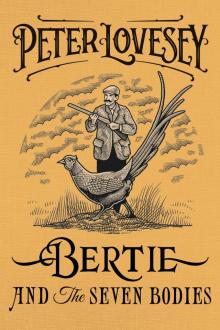 Bertie and the Seven Bodies
Bertie and the Seven Bodies The Headhunters ihmi-2
The Headhunters ihmi-2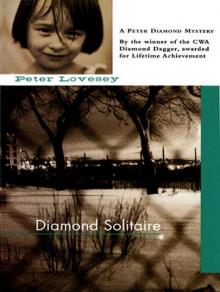 Diamond Solitaire pd-2
Diamond Solitaire pd-2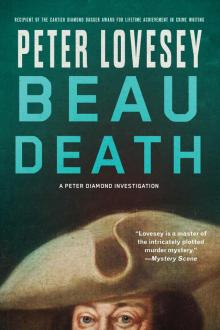 Beau Death
Beau Death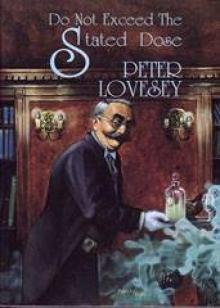 The Case Of The Dead Wait
The Case Of The Dead Wait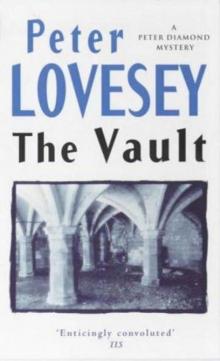 The Vault
The Vault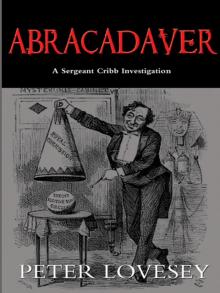 Abracadaver sc-3
Abracadaver sc-3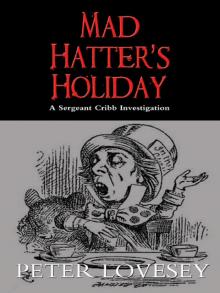 Mad Hatter sc-4
Mad Hatter sc-4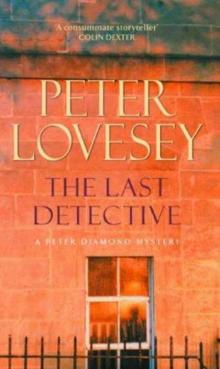 The Last Detective pd-1
The Last Detective pd-1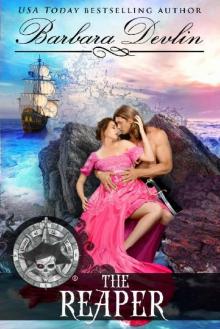 The Reaper
The Reaper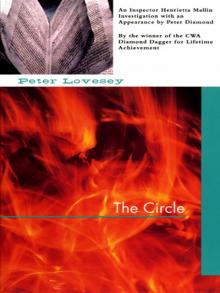 The Circle
The Circle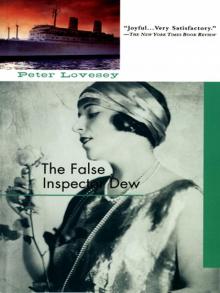 The False Inspector Dew
The False Inspector Dew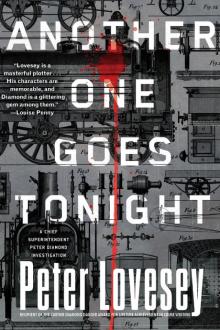 Another One Goes Tonight
Another One Goes Tonight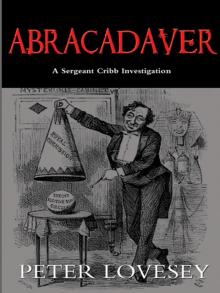 Abracadaver
Abracadaver Waxwork sc-8
Waxwork sc-8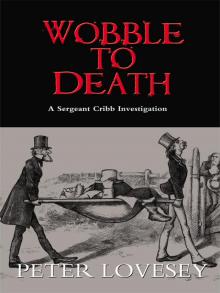 Wobble to Death sc-1
Wobble to Death sc-1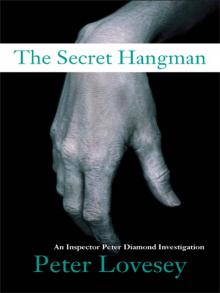 Peter Diamond - 09 - The Secret Hangman
Peter Diamond - 09 - The Secret Hangman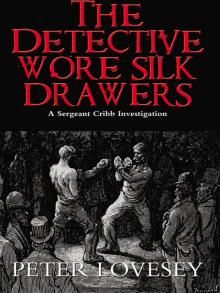 The Detective Wore Silk Drawers sc-2
The Detective Wore Silk Drawers sc-2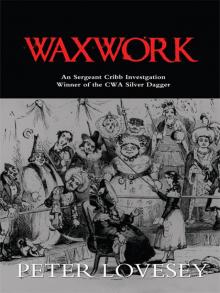 Waxwork
Waxwork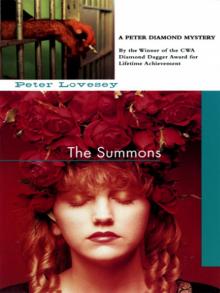 The Summons
The Summons Mad Hatter's Holiday
Mad Hatter's Holiday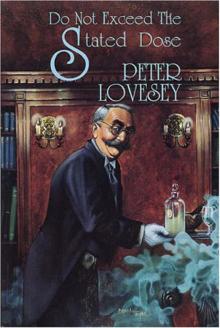 Do Not Exceed the Stated Dose
Do Not Exceed the Stated Dose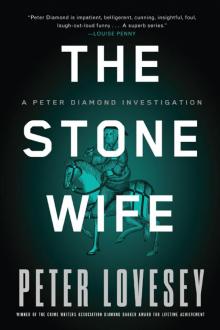 The Stone Wife
The Stone Wife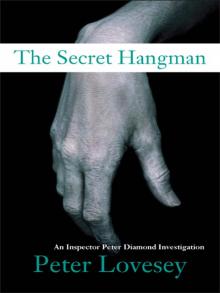 The Secret Hangman pd-9
The Secret Hangman pd-9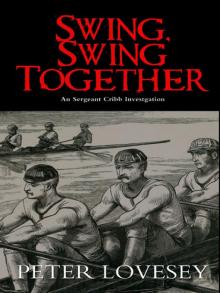 Swing, Swing Together sc-7
Swing, Swing Together sc-7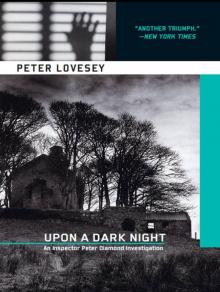 Upon A Dark Night
Upon A Dark Night Bloodhounds
Bloodhounds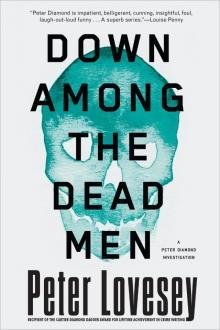 Down Among the Dead Men
Down Among the Dead Men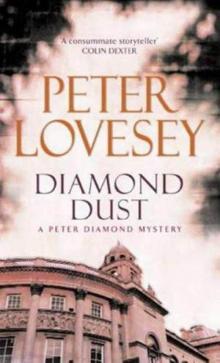 Diamond Dust
Diamond Dust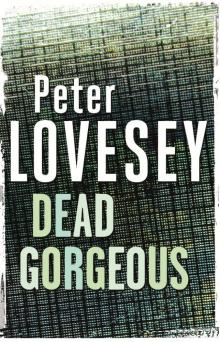 Dead Gorgeous
Dead Gorgeous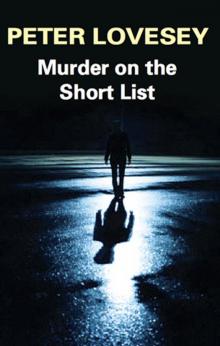 Murder on the Short List
Murder on the Short List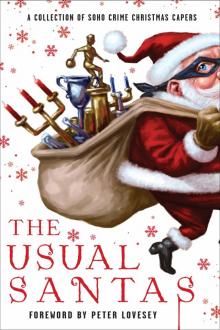 The Usual Santas
The Usual Santas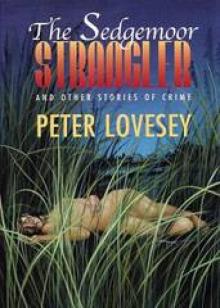 The Perfectionist
The Perfectionist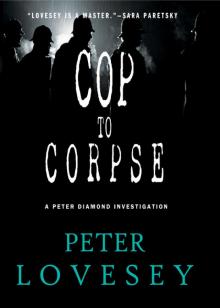 Cop to Corpse
Cop to Corpse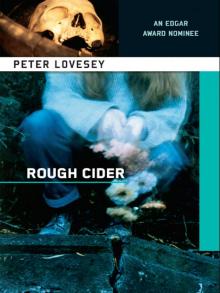 Rough Cider
Rough Cider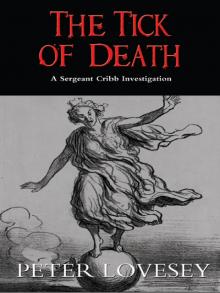 The Tick of Death
The Tick of Death Bloodhounds pd-4
Bloodhounds pd-4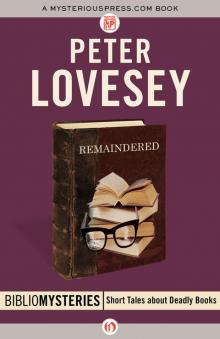 Remaindered
Remaindered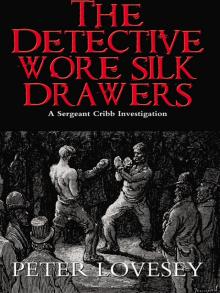 The Detective Wore Silk Drawers
The Detective Wore Silk Drawers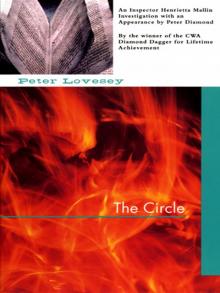 The Circle ihmi-1
The Circle ihmi-1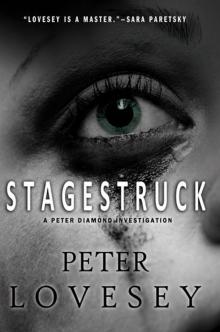 Stagestruck
Stagestruck The Secret of Spandau
The Secret of Spandau The Last Detective
The Last Detective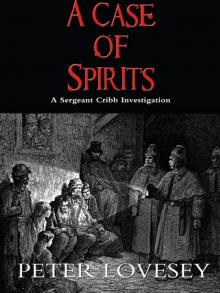 A Case of Spirits sc-6
A Case of Spirits sc-6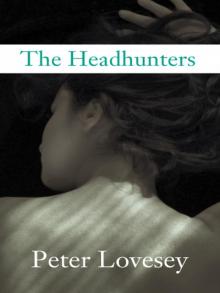 The Headhunters
The Headhunters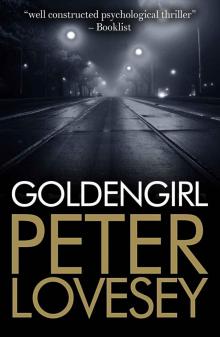 Goldengirl
Goldengirl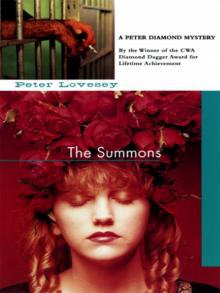 The Summons pd-3
The Summons pd-3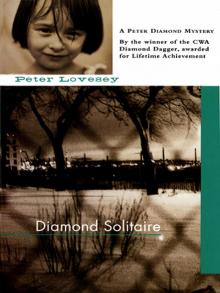 Diamond Solitaire
Diamond Solitaire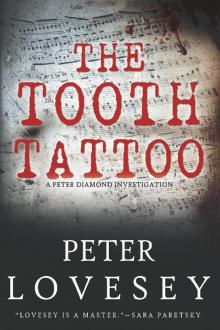 The Tooth Tattoo
The Tooth Tattoo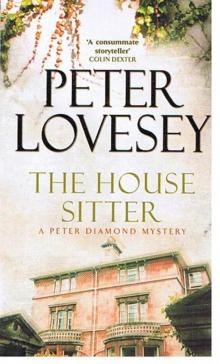 The House Sitter
The House Sitter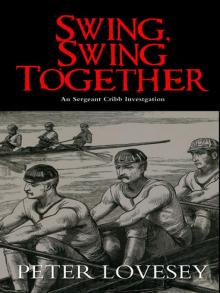 Swing, Swing Together
Swing, Swing Together